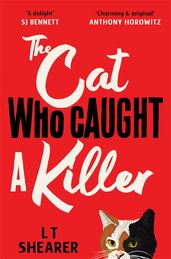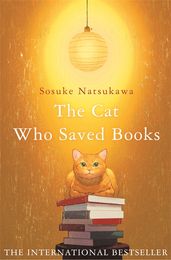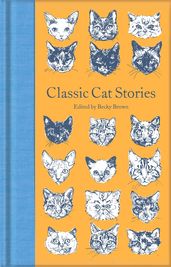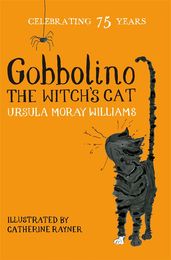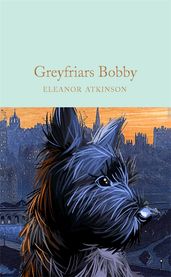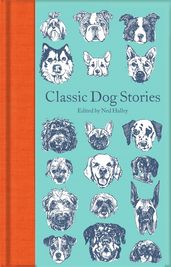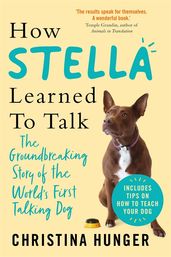Cats vs Dogs: books edition
Taking on the debate the only way we know how.

Forget the holidays, musical festivals and balmy evenings. August means only one thing. It’s International Cat Day and International Dog Day, and time to settle the cat vs dog debate once and for all. Read on as two Pan Macmillan colleagues from each side of the divide make their case using only books.
Books for cat lovers
Do you want something predictable and shamelessly attention seeking, or would you prefer mysterious and intriguing? Whether we’re talking about books or pets, I think we all know the answer. Stealthily prowling the pages and leaving their indelible pawprints behind, here are our favourite books featuring our feline friends.
The Cat Who Caught a Killer
by L T Shearer
Meet Lulu Lewis, a retired detective mourning her husband's death. When her mother-in-law dies suspiciously, she's determined to uncover the truth. Joining her on this journey is Conrad, an extraordinary cat unlike any detective you've ever known. With Conrad and the unbeatable prowess of feline intuition by her side, Lulu begins to unravel the secrets that lie beneath the surface. While a dog companion might obediently fetch a stick and sniff around a bit, cat detective extraordinaire Conrad fetches vital clues with an effortless grace that puts Scooby Doo to shame.
The Cat Who Saved Books
by Sosuke Natsukawa
Turns out cats can catch killers and save books – make that two-nil to Team Cat. In a tiny second-hand bookshop, Rintaro Natsuki finds solace among towering shelves of books. After his grandfather's passing, the shop faces closure – until a talking tabby cat, Tiger, seeks Rintaro's help. Together, they embark on magical adventures to rescue mistreated books – a feat that, for bookworms, tops even the most legendary tales of canine valour. A story for those for whom books are so much more than words on paper, and a testament to why cats truly rule the literary (and real) world.
Classic Cat Stories
by Becky Brown
Cats, be they much loved pets or inscrutable figures in the night, lend themselves to stories and literary invention. Classic Cat Stories is a beautiful anthology that includes fairy tales and fables from the likes of Rudyard Kipling and Charles Perrault as well as comic tales from Saki and E. F. Benson. And while we do also have a Classic Dog Stories anthology, would you rather be cosied up with a cup of tea, a warm fuzzy blanket and a charming kitty by your side, or have your reading oasis ruined by a slobbering, tail-wagging beast relentlessly nudging for belly-rubs. Let's face it, there's only one right answer.
Gobbolino the Witch's Cat
by Ursula Moray Williams
We start ‘em young over on Team Cat with this classic children’s book. No one could mistake Gobbolino for a simple kitchen cat, with his sparky whiskers and magic tricks, but that's just what the witch's kitten wants to be. Instead of learning how to turn mice into toads for the witch's brew, Gobbolino sets out on an adventure to find a family and a home of his own. Look at Gobbolino’s adorable white sock and read his heart-warming story before you dare claim cats are cold and heartless. First published in 1942 and still in print today, eighty years’ worth of readers can’t be wrong: the cats have it.
Books for dog lovers
Excited, loyal, fun, extremely pleased to see you: welcome to Team Dog.
While cat-related titles tend toward fiction, books for dog-lovers feature a veritable smorgasbord of real-life stories too, from the moving story of Christian Lewis’s walk around the coast of Britain with his beloved dog Jet in Finding Hildasay to the uplifting tale of Kika the guide dog by Amit Patel. It’s almost like dogs are genuinely brilliant and adventurous but if you need more from a feline companion than lethargy and judgement, you have to make it up. . .
Putting all cattiness aside, the book choices below reflect the resilience, dependability and sheer joy of dogkind, and are also just great reads, whatever your pet persuasion.
Greyfriars Bobby
by Eleanor Atkinson
Dogs score ten out of ten for devotion in this classic novel set in nineteenth-century Scotland. Inspired by true events (there’s a statue of Bobby in Edinburgh), Eleanor Atkinson’s novel tells the story of Auld Jock, a shepherd who loses his job and arrives in Edinburgh with nothing but the terrier from the farm he used to work. Unable to find a new job, he falls into a life of poverty, made all the more miserable when his previous employer comes and takes Bobby back to the farm. But Bobby is having none of it, and makes his way back to Auld Jock, even guarding his grave in Greyfriars kirkyard for years after his death. Good luck getting Felix to do that.
Went to London, Took the Dog
by Nina Stibbe
Ten years after the publication of the prize-winning Love, Nina comes the author’s diary of her return to London in her sixty-first year – alongside her dog, Peggy. Taking up lodging in the house of fellow writer Deborah Moggach, Nina rediscovers the city she once called home, as well as finding time to scrutinise her son’s online dating developments, navigate the politics of the local pool and, of course, look after Peggy. This book is, simply, very, very funny. Are cats funny? No.
Classic Dog Stories
by Ned Halley
We see your sleek book of classic cat stories filled with Poe and H. P. Lovecraft and raise you this beautiful hardback collection for dog-lovers. This volume brings together a pack of dog stories from the likes of Mark Twain, Virginia Woolf and Charles Dickens. There are pampered lapdogs, wayward mongrels and faithful guard dogs, and the short story format is perfect for those busy having a brilliant time with their entertaining and emotionally available pets.
How Stella Learned to Talk
by Christina Hunger
Who’s a good boy? Now they can actually tell you. Part heart-warming memoir of a woman’s relationship with her dog, part how-to guide, this incredible book shows you how to teach your dog to communicate using simple paw-sized buttons. It’s broken down into easy to follow steps alongside a level of developmental detail only a speech-language pathologist could offer. Credit where it’s due: I have no doubt cats could also do this should they ever deign to acknowledge our presence.
